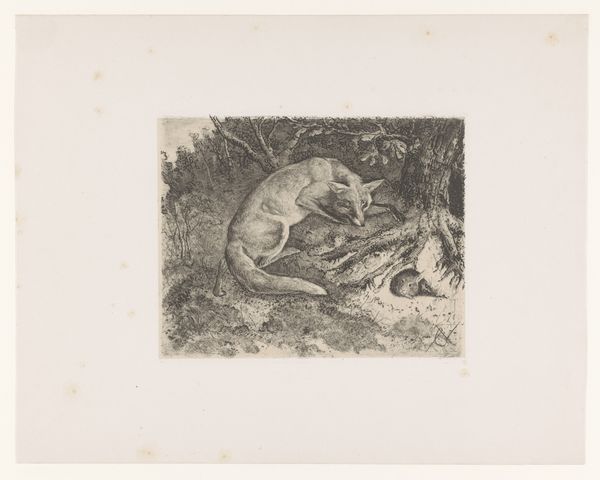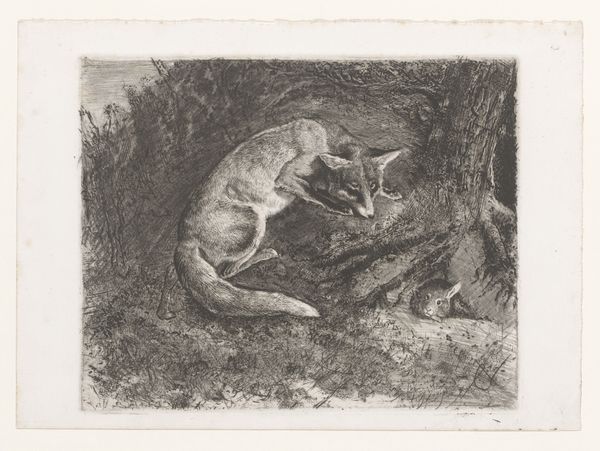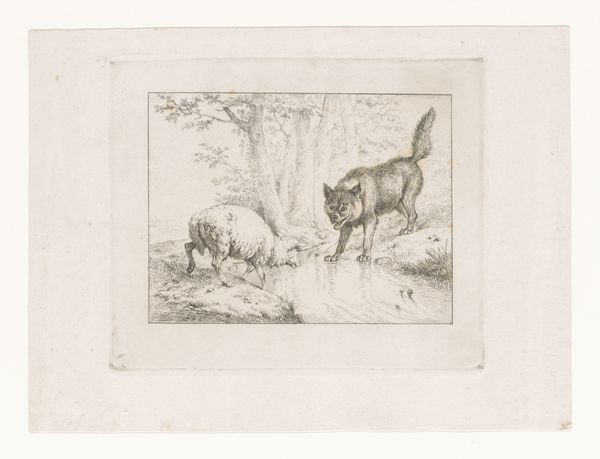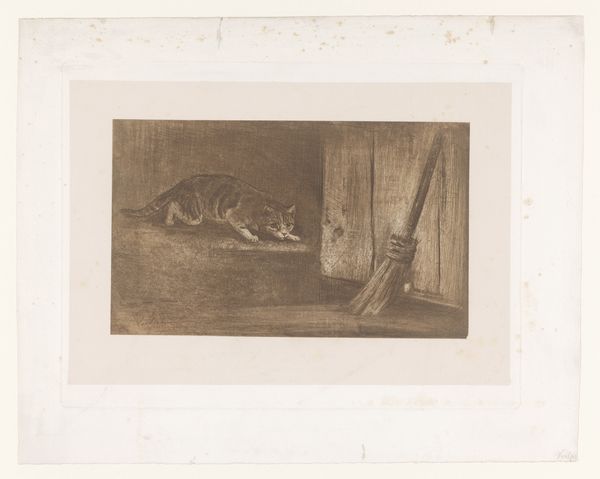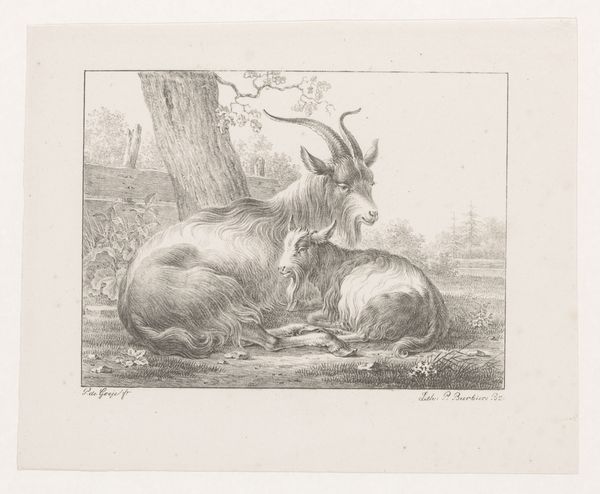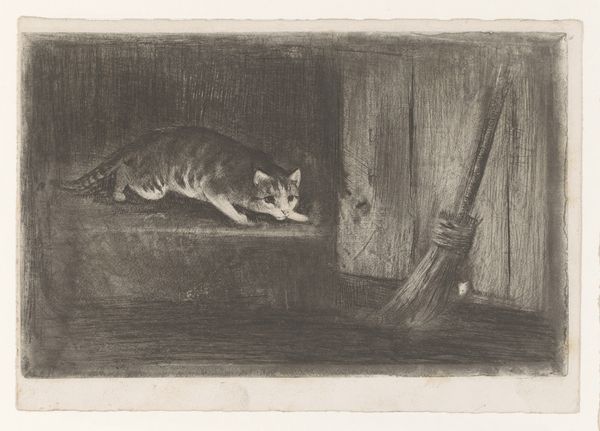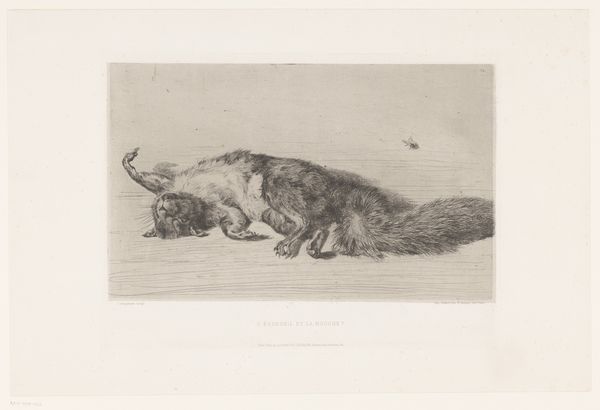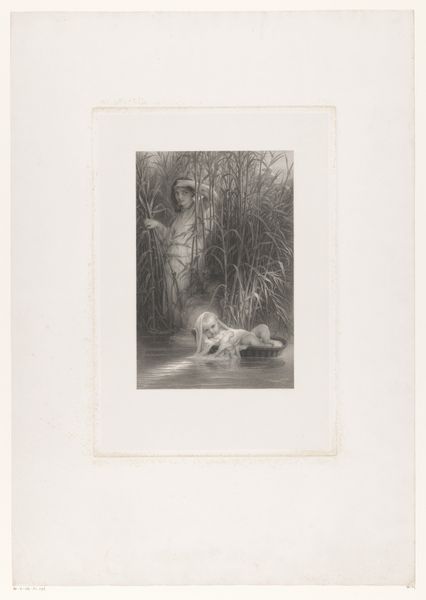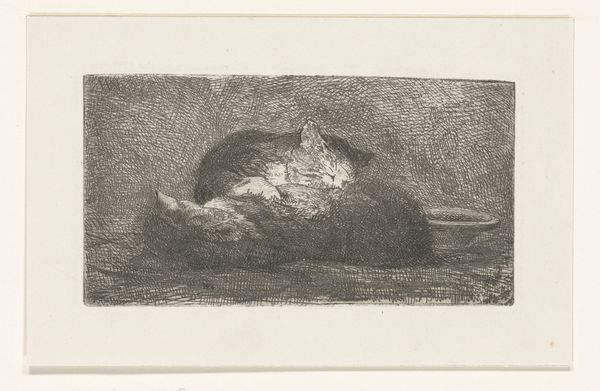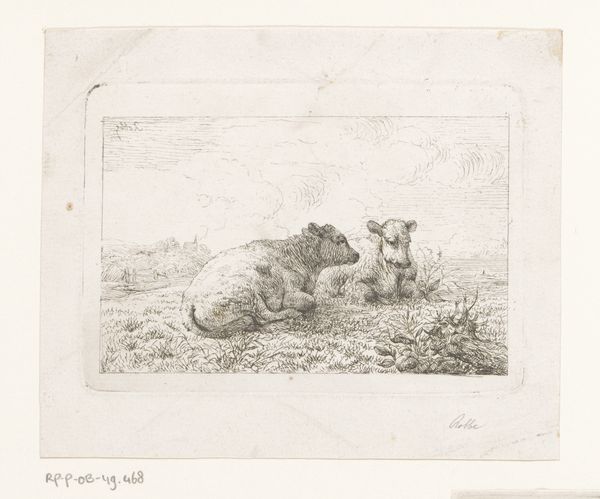
print, etching, engraving
#
animal
# print
#
etching
#
landscape
#
genre-painting
#
engraving
#
realism
Dimensions: height 196 mm, width 247 mm
Copyright: Rijks Museum: Open Domain
Editor: So, here we have Charles Verlat’s "Fox Hunting a Rabbit", an etching and engraving made sometime between 1834 and 1890. I'm immediately drawn to the contrasting textures, particularly how the softness of the fox’s fur is juxtaposed with the roughness of the tree bark. How do you interpret this work from a formalist perspective? Curator: From a formalist standpoint, the interplay of light and shadow commands attention, doesn't it? Note how the artist uses chiaroscuro to create depth and a sense of drama. The composition itself—a diagonal arrangement from the upper left to the lower right—guides the viewer's eye. How does that visual arrangement strike you? Editor: It does create a dynamic feel, almost as if we’re catching the scene mid-action. What do you make of the lines themselves? Curator: Precisely. The linework is remarkably intricate. Observe the density and variation, crafting both form and texture. Thick, decisive lines define the fox’s outline, while finer, more delicate strokes suggest the rabbit's fragility and the surrounding foliage. Isn't the strategic placement of dark and light areas compelling? Editor: Absolutely. The darker areas seem to concentrate the tension around the fox and rabbit, emphasizing the predator-prey relationship. So, by focusing solely on these elements – line, light, and composition – we gain insight into the emotional impact of the piece, without necessarily needing historical or cultural context. Curator: Indeed. Formal analysis unveils the inherent qualities of the work. By meticulously studying the elements, we decode the artist's choices, grasping their intention, and, more importantly, appreciating the inherent aesthetics. Has this formal examination enhanced your view of the artwork? Editor: It certainly has. I now see how the formal elements work together to create meaning, regardless of historical context. Thanks for elucidating that.
Comments
No comments
Be the first to comment and join the conversation on the ultimate creative platform.
